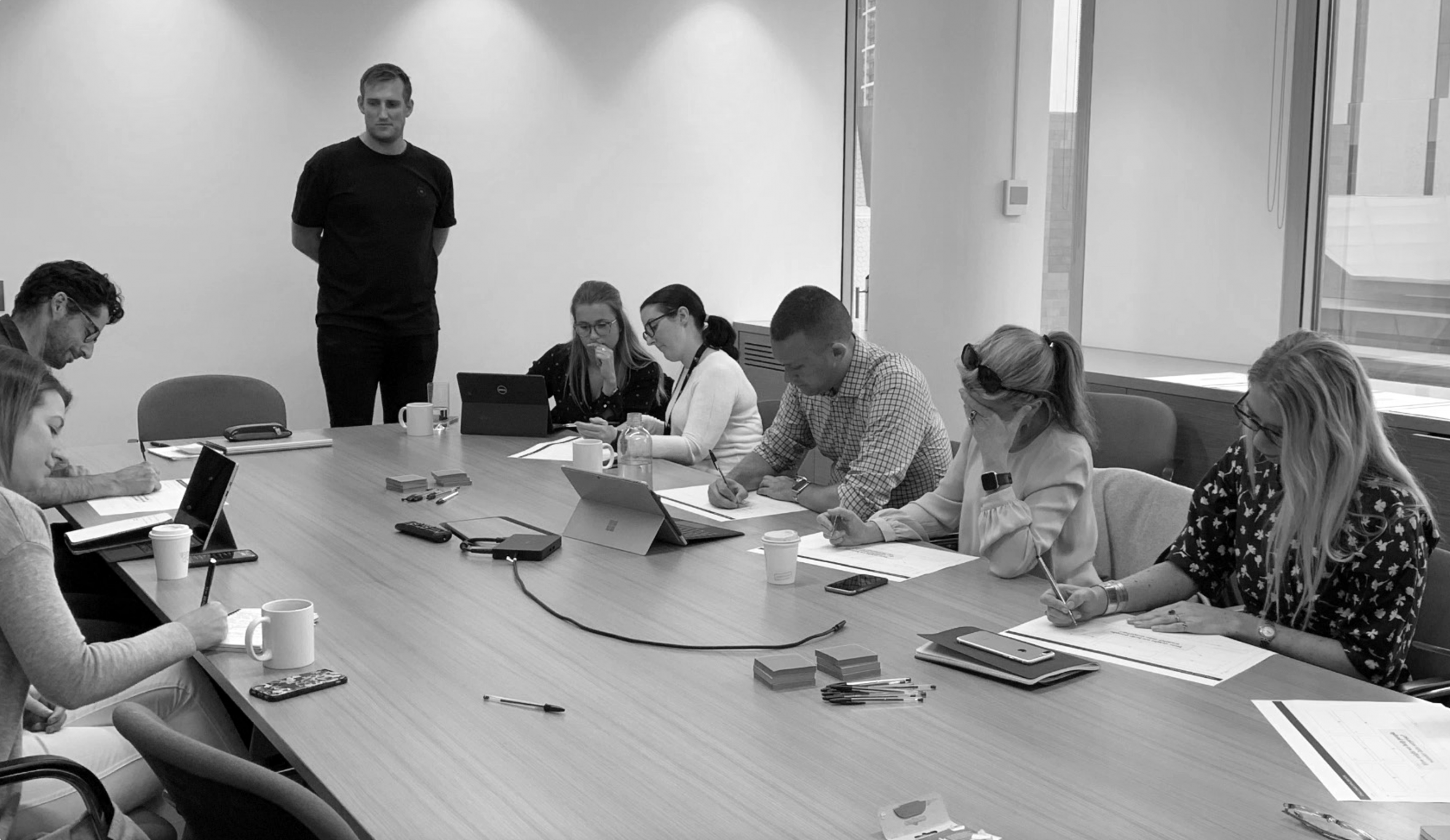“It is time that we become human again”
— Sigfried Giedion
Human and Holistic
People are a complicated jumble of thoughts, emotions and needs. We use our head, heart and gut at different times to make decisions, navigate, learn, adapt, understand and interact with the world around us. Often we use our hands and feet too.
Our perception of the world is a composite. We don't perceive the world in a series of bits or bytes, design disciplines or scopes, business units or channels, but as all things all the time. A collection of individual moments and transitions that we blend together.
I consider the whole complex mess. From a single interaction in a journey, to a journey in someones day, to a persons day in a community and that community in the world. My approach includes how each part informs and recalibrate the others, finding connections and dependencies to balance each part ensuring impact and success.
Scene and Sequence
People bring their past with them. What comes before forms our expectations and frame our perception of our current experience. With each new moment/interaction we adjust our expectations and set the scene for future experiences.
Our behaviour is the product of our current situation and disposition. Both are comprised of common elements; context, drivers, mindsets and needs, that influence our behaviour, decisions, interactions and resulting rituals.
I consider beginnings, during and after. To build a framework of steps and stages, phases and thresholds (interactivity and visibility) that define what is front-of-house or on-stage, behind a curtain or hidden in a back room. My approach nurtures the peculiarity and oddity, kinks and quirks of the project to ensure authenticity and advocacy.

About me
I am a Melbourne-based strategic consultant who has developed a rigorous process for producing innovative strategies while working collaboratively with a range of Australia’s leading design studios. My professional training allows me to interpret complex systems, distil opportunities and provide strong theoretical and practical input into the design and construction of physical and digital environments.
With a special interest in detailed analysis and the development of experience strategies, I have applied my unique process to a wide range of public projects. I am responsible for developing strategies that inform design solutions to improve navigation, reduce errors and improve efficiency to provide the best experience for all users.
Approach
My approach is human-centred and holistic - looking at each project through a set of interdisciplinary lenses. The Experience of an end user is central to the development of an experience strategy and is impacted by each design discipline working (or not working) together in harmony.
My rigorous approach seeks to (01) explore and understand complex problems, systems and connections; (02) define and develop strategies by uncovering insights and finding patterns; (03) inform design solutions and interactions. My breadth of project experience, together with creative and lateral thinking, ensures outcomes that are innovative, forward-thinking and unique to each project.

“Strategic design work swings from the meta to the matter
and back again, oscillating between these two states in order
to recalibrate each in response to the other.”
— Dan Hill
Wayshowing
Wayfinding is human behaviour. It is people navigating a built environment, using a structured sequence of decisions that leads us to a destination.
In its simplest form, it is people getting from A to B.
For a successful journey, people need to understand three things;
1. Where they are
2. Where they are going
3. The route between the two.
Experience
User experience is the combination of all interactions between people and an enterprise.
Every interaction or touch-point can add to (or detract from) an individual’s relationship with an organisation – their offer, product or service.
Regardless of a project’s designed solutions – physical, digital, cultural, identity, spatial, system, people, brand, in any combination – they should be informed by the theories and strategies that influence human behaviour.